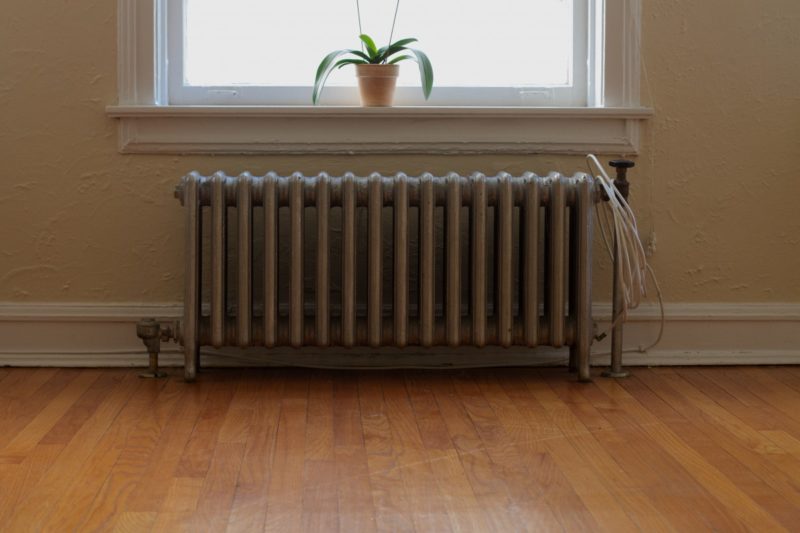Are you wondering how to install electric baseboard heater? No more worries, you have arrived at the right place. Baseboard heaters are indeed an incredible asset to any room in your house that is drafty or cooler than the others. Choose a heater size depending on the space’s floor space to be warmed, enabling around 10-15 watts per sq foot of room area when buying a baseboard heater.
The primary function of baseboard warmers is to provide additional heat. Electric baseboard heaters may be costly when used to heat a whole house.
There are two types of baseboard heaters 120-volt and 240-volt. 240v heaters work at less current and are somewhat more power-saving than 120-volt heaters due to the greater voltage. If the company’s guidelines allow for installation near drapes and furniture, such heaters could be installed beneath windows. Continue reading to learn more!
What Is A Baseboard Heater?
Electric baseboard heating, often known as resistive power heating, is a type of zonal heating that produces and adjusts the temperature in every one of your home’s rooms independently. The heat is distributed without the need for burners, boilers, heat ducts, valves, or fans, and we will discuss its types below.
#1. The convection baseboard heaters
The most prevalent are convection heaters, usually plugged directly into a home’s electrical system. On the other hand, some low-cost devices may be connected to a conventional electrical socket. Baseboard convection heaters come in a variety of sizes and heat capabilities. They’re often affordable, simple to deploy, and rapidly heat the space in which they’re placed.
#2. The hydronic baseboard heaters
The hydronic baseboard heaters transmit radiant heat through an internal tank of heated liquid. These can be self-contained systems with just internal storage of heat by electricity or draw hot water from an apartment’s central heating boilers. Hydronic baseboard heaters are much more power-saving than convection baseboard heaters in any circumstance. Because the liquid tank remains warm long after the heater is switched off, it does not require a continuous power source to maintain proper temperature.
Tips To Install Electric Baseboard Heater
Almost everything baseboard heater installations will necessitate the replacement of orphaned wire inside the heat and thermostats with firm wire between both the thermostats wire boxes and the baseboard heater and solid cables leading to the main switchboard and circuit breaker. The below-mentioned steps will help you learn how to install electric baseboard heaters.
#1. Circuit wiring
It’s as simple as installing the 20-amp circuit to wire baseboard heaters. Simply connect your electricity supply panel to the baseboards heater with a 12-2 non-metallic encased wire. You won’t need to put in a fuse box to supply a baseboard heater because it has one built-in. A qualified electrician should install the breaker and make final hookups at the main switchboard.
Both black and white electrical wires of a 240v baseboard heater will be connected to the double 20-amp breakers. Near the breaker, a piece of red or black tape will be wrapped around the white wire. This indicates that the wire is “hot” rather than “neutral.” There will be no neutral wire in the circuit. Its bare-copper ground cable will be connected to the board’s bottom bus. Find out how to install electric baseboard heater.
#2. The thermostat wiring
We must run a piece of circuit wire from the thermostat cabinet to the heater if cabling a baseboard heater with such an independent thermostat. In 240-volt and 120-volt circuits, its thermostat wiring connections are different. Its two hot wires from the breakers link to the cables on the thermostat’s “line” face in the event of a 240-volt hookup. Its two hot wires from the heater’s cord are connected to the thermostat’s two “load” wires.
With a strip of red or black tape, identify all-white electrical wires as “hot.” A pigtail wire connects the exposed ground wires to the earth bolt or ground on the thermostat.
A dark heated cable from the circuit goes to a “main” thread on the thermostat in 120v wiring. The “loading” cable on the thermostat is connected to the dark hot wire going to the heater. All-white ground wires from both wires are linked together; these need not go to the thermostat. A ponytail wire connects the soil surface wires to the earth bolt or ground on the thermostat. Here’s thermostat wiring explained in easy terms!
#3. Heater wiring
The thermostat’s circuits wires connect to the heaters according to the wiring schematic provided by the manufacturer, and wire layouts may differ. Each of the heated circuits cables links to one of the heater wires in a 240-volt course, while the wire goes to the grounding bolt or ground on the heater. A black heated circuits wire connects to one of the heater wires as well as the white intermediate circuits cable links to another heater cable with 120-volt heaters. The ground wire is connected to the heater’s grounding wire or ground. Here’s how to wire electric baseboard heater.
It’s A Wrap!
We are delighted to know that you have learned how to install electric baseboard heaters. If you are going to install a new baseboard heater, this article will be helpful for you. Installation is not an easy task. If you cannot install it, you need to call an expert. Thank you, friends, for sticking with us!

